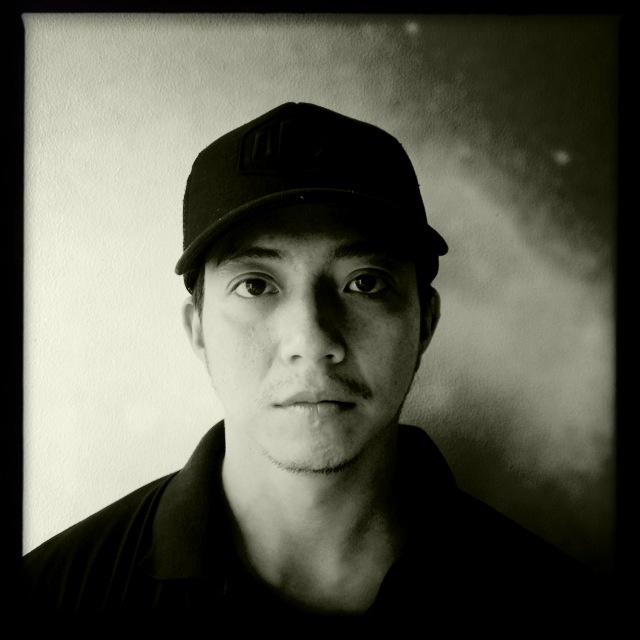
Jake Verzosa: Preserving Culture through Images
“I have always been that fly on the wall and photography has always been my way of interacting with the world,” says Jake Verzosa, photographer and, more accurately, visual storyteller.
As a teenager, he started using his father’s cameras and darkroom gear; and used them all through college. After graduation, Verzosa worked as a programmer in Manila. Two years later, though, in 2002, the pull of photography became too strong to ignore. He quit his desk job and became a freelance photographer—and didn’t earn in cash in the beginning.
His career was a slow burn. He didn’t know how to pursue photography as a profession yet. “While I was unemployed, I shot anything—from portraits, weddings, and concerts—[in exchange] for free film and polaroids to supplement my hobby,” Verzosa says. “Photography was my ticket to experiencing new things and I took it all in. Later on, I found out that it could be both a [hobby] and a profession.”
As the publishing industry got to know his skill, Verzosa began to work on fashion and lifestyle features for some of Manila’s top glossy magazines. However, there were stories that Verzosa wanted to tell beyond the pages of magazines.
 Part of Verzosa's photo series, "Manila's Railside: Life on the Line"
Part of Verzosa's photo series, "Manila's Railside: Life on the Line"
“I’ve always been interested in telling meaningful stories through images,” he says. “So I took up documentary workshops in Asia under Philip Jones Griffiths, Jack Picone, and [at the] Angkor Photo Festival. From there, I’ve tried to separate my commercial work with the personal.” His work has since taken him on frequent trips to Europe and around Asia.
It isn’t always easy, however. “Time and funding [are] always a challenge, especially for long-term documentary projects,” he says. “Some of the more important stories that need to be told take a lot of time to make. Whenever I make money doing commercial work, I would save some and use it to pursue a personal project.”
One of these personal projects brought Verzosa home to the landlocked Cordillera region in northern Philippines, where he grew up. He wanted to chronicle the remnants of the Kalinga tribe’s culture of tattooing into what eventually became a book: The Last Tattooed Women of Kalinga.
As a child growing up in Cagayan, Verzosa remembers being fascinated by the tattoos of the tribe. “Tattooing was considered [by the Kalinga tribe] an important medium to express the different stages of life and death of the individual, their family, and the community. It is a practice deeply rooted in ancient rituals, embodying not only the personal and sociological aspects of a person’s life, but also the philosophical ideals that have now been forgotten. The only link to these practices is found in the indelible ink that adorns the tattooed members of the tribe.”
 Libay Ngaluban Busaiya, 84, one of Verzosa's subjects in "The Last Tattooed Women of Kalinga"
Libay Ngaluban Busaiya, 84, one of Verzosa's subjects in "The Last Tattooed Women of Kalinga"
To capture the women in their natural setting, Verzosa had to take several trips up to the rice terraces of the Cordillera mountain range. His project came at an opportune time. Because of changing standards in beauty, the younger generations of Kalinga women no longer see the aesthetic significance of tattoos. The average age of Verzosa’s tattooed book subjects is 80. One of the women who posed for Verzosa’s camera was 94-year-old Fhang-Od, the last member of her tribe who still practices the thousand-year-old art of Kalinga tattooing.
Verzosa completed his project in 2013 during his residency at the Musee Nicephore-Niepce in France. A year later, Silverlens Gallery helped print the portraits Verzosa shot into a book, and launched it at the Paris Photo Fair that same year. He has since put up the individual prints of his project in several countries, including Cambodia, Laos, Singapore, Japan, Nepal, Canada, the U.S., Amsterdam, and, of course, Manila.
Verzosa’s journey chronicling some of the Philippines’ vanishing traditions does sound like a dream. And while he is familiar with the shifting benchmark in art appreciation—“Popularity and likes somehow influence what photographers put out there”—Verzosa intends to keep doing his work to inspire and to add beauty to the world.
Photos courtesy of Jake Verzosa. See more of his work at www.jakeverzosa.com
